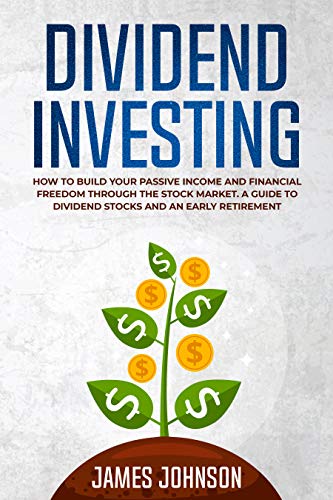
Passive business ideas don't come without work, even though there won't be any employees. Freelancers are still free to work for clients and must decide how they want their days to be structured. For making mistakes, they could still get reprimanded. Here are four popular passive business ideas. Learn how you can create your own passive business. With these tips you will be well on your road to financial independence.
Dropshipping
Dropshipping is a great option for passive income. It's low-risk and hands-off. Dropshipping is a great way to make money and not have to manage product inventory or shipping. The process of starting dropshipping is easy, but you'll need to do some research.

In general, e-commerce and Dropshipping strategies can generate a passive income. You will not need to make a huge initial investment or invest much time. Dropshipping is not difficult, but it requires dedication and skills. Dropshipping is not a quick way to make a fortune. You won't make millions overnight, and there is no way to know.
Information products
Many people earn a living selling information products over the Internet. People search for specific answers all the time. Common questions can be found by searching Facebook groups or forums. Your information should be unique, easy-to-understand, and useful. Once you have this information, you can market to your list and make money. It's worth looking into passive business ideas as long as you have a product that is valuable to your target audience. How do you sell it?
It is easy and inexpensive to create and sell information products. You don't need to ship or manufacture your information products. It takes very little time to produce and distribute your information product. The price you charge for the product is dependent on its quality and niche. If you know what the market is looking for, you can sell it free of charge. However, sales tax might be required for the product.
Renting out rental properties
It can be a great way to make passive income by renting out property, but it requires a lot more work than one might expect. If you have $2,000 monthly mortgage payments and $300 monthly expenses, then you'd need to charge $3,133 per month in rent to pay these expenses. Market conditions, tenant late payment, property damage, and the availability of a tenant are some of your risk factors. These are all risk factors that could negatively impact your passive earnings.

A recurring income is another benefit to renting out rental properties. This type of business is particularly popular with people who want to earn extra money while remaining hands-free. However, there are risks associated with this type business. Your tenants might not pay rent on time or have a clean driving record. This could lead to an expensive liability on your bank account. That's why you need to weigh the risks involved and develop a plan that covers those risks.
Selling photography online
Your own website is one of the best ways you can sell your photos online. You will have more control over the terms of sale and marketing, and you'll be able to market your work more easily. Fotomoto and Getty Images are just some of the many online photo marketplaces. You will need to develop your terms and conditions for use as well customer and user agreements. These terms and conditions are particularly important as online photo marketplaces can be a target for copyright infringement.
You can also sell prints online by creating an online shop. There are many platforms online where you can sell your images, and most of them allow you to sell them at discounts. You can sell your images online at a discounted price, rather than in brick-and–mortar shops. This allows you to maximize your profit margins, while also providing an easy service for your customers. Selling photography online is a great passive business idea that will increase your income without the hassle of being hands-on.
FAQ
At what age should you start investing?
The average person spends $2,000 per year on retirement savings. You can save enough money to retire comfortably if you start early. You may not have enough money for retirement if you do not start saving.
You must save as much while you work, and continue saving when you stop working.
The earlier you begin, the sooner your goals will be achieved.
If you are starting to save, it is a good idea to set aside 10% of each paycheck or bonus. You might also be able to invest in employer-based programs like 401(k).
Contribute only enough to cover your daily expenses. After that you can increase the amount of your contribution.
Do I need an IRA to invest?
An Individual Retirement Account (IRA), is a retirement plan that allows you tax-free savings.
You can contribute after-tax dollars to IRAs, which allows you to build wealth quicker. They provide tax breaks for any money that is withdrawn later.
For those working for small businesses or self-employed, IRAs can be especially useful.
Employers often offer employees matching contributions to their accounts. You'll be able to save twice as much money if your employer offers matching contributions.
Do I need to know anything about finance before I start investing?
You don't require any financial expertise to make sound decisions.
All you need is commonsense.
These are just a few tips to help avoid costly mistakes with your hard-earned dollars.
Be careful about how much you borrow.
Do not get into debt because you think that you can make a lot of money from something.
Be sure to fully understand the risks associated with investments.
These include inflation, taxes, and other fees.
Finally, never let emotions cloud your judgment.
Remember that investing doesn't involve gambling. You need discipline and skill to be successful at investing.
You should be fine as long as these guidelines are followed.
How do you start investing and growing your money?
Learn how to make smart investments. You'll be able to save all of your hard-earned savings.
You can also learn how to grow food yourself. It is not as hard as you might think. You can easily plant enough vegetables for you and your family with the right tools.
You don't need much space either. Just make sure that you have plenty of sunlight. Consider planting flowers around your home. They are very easy to care for, and they add beauty to any home.
You can save money by buying used goods instead of new items. They are often cheaper and last longer than new goods.
How do I know if I'm ready to retire?
Consider your age when you retire.
Are there any age goals you would like to achieve?
Or, would you prefer to live your life to the fullest?
Once you have decided on a date, figure out how much money is needed to live comfortably.
Then you need to determine how much income you need to support yourself through retirement.
Finally, calculate how much time you have until you run out.
What are the different types of investments?
These are the four major types of investment: equity and cash.
It is a contractual obligation to repay the money later. This is often used to finance large projects like factories and houses. Equity is the right to buy shares in a company. Real Estate is where you own land or buildings. Cash is what your current situation requires.
You are part owner of the company when you invest money in stocks, bonds or mutual funds. Share in the profits or losses.
Statistics
- Over time, the index has returned about 10 percent annually. (bankrate.com)
- As a general rule of thumb, you want to aim to invest a total of 10% to 15% of your income each year for retirement — your employer match counts toward that goal. (nerdwallet.com)
- 0.25% management fee $0 $500 Free career counseling plus loan discounts with a qualifying deposit Up to 1 year of free management with a qualifying deposit Get a $50 customer bonus when you fund your first taxable Investment Account (nerdwallet.com)
- An important note to remember is that a bond may only net you a 3% return on your money over multiple years. (ruleoneinvesting.com)
External Links
How To
How to invest in commodities
Investing in commodities means buying physical assets such as oil fields, mines, or plantations and then selling them at higher prices. This is called commodity-trading.
Commodity investing is based on the theory that the price of a certain asset increases when demand for that asset increases. The price falls when the demand for a product drops.
You want to buy something when you think the price will rise. You want to sell it when you believe the market will decline.
There are three types of commodities investors: arbitrageurs, hedgers and speculators.
A speculator is someone who buys commodities because he believes that the prices will rise. He doesn't care whether the price falls. Someone who has gold bullion would be an example. Or someone who invests in oil futures contracts.
An investor who buys commodities because he believes they will fall in price is a "hedger." Hedging is a way to protect yourself against unexpected changes in the price of your investment. If you own shares in a company that makes widgets, but the price of widgets drops, you might want to hedge your position by shorting (selling) some of those shares. That means you borrow shares from another person and replace them with yours, hoping the price will drop enough to make up the difference. The stock is falling so shorting shares is best.
The third type of investor is an "arbitrager." Arbitragers trade one thing in order to obtain another. For instance, if you're interested in buying coffee beans, you could buy coffee beans directly from farmers, or you could buy coffee futures. Futures allow the possibility to sell coffee beans later for a fixed price. The coffee beans are yours to use, but not to actually use them. You can choose to sell the beans later or keep them.
You can buy something now without spending more than you would later. If you know that you'll need to buy something in future, it's better not to wait.
There are risks with all types of investing. One risk is that commodities prices could fall unexpectedly. Another is that the value of your investment could decline over time. These risks can be minimized by diversifying your portfolio and including different types of investments.
Another factor to consider is taxes. You must calculate how much tax you will owe on your profits if you intend to sell your investments.
If you're going to hold your investments longer than a year, you should also consider capital gains taxes. Capital gains tax applies only to any profits that you make after holding an investment for longer than 12 months.
You may get ordinary income if you don't plan to hold on to your investments for the long-term. Earnings you earn each year are subject to ordinary income taxes
In the first few year of investing in commodities, you will often lose money. As your portfolio grows, you can still make some money.